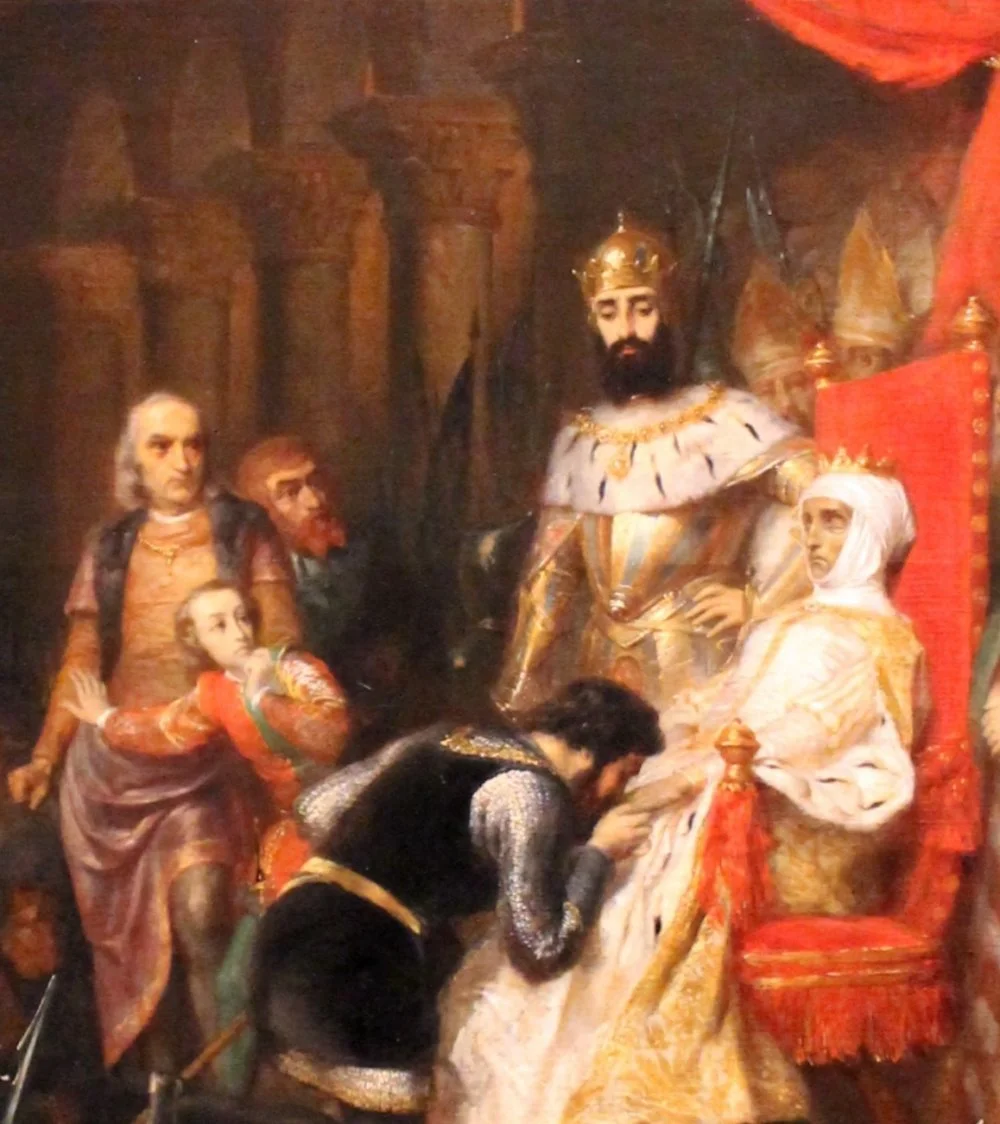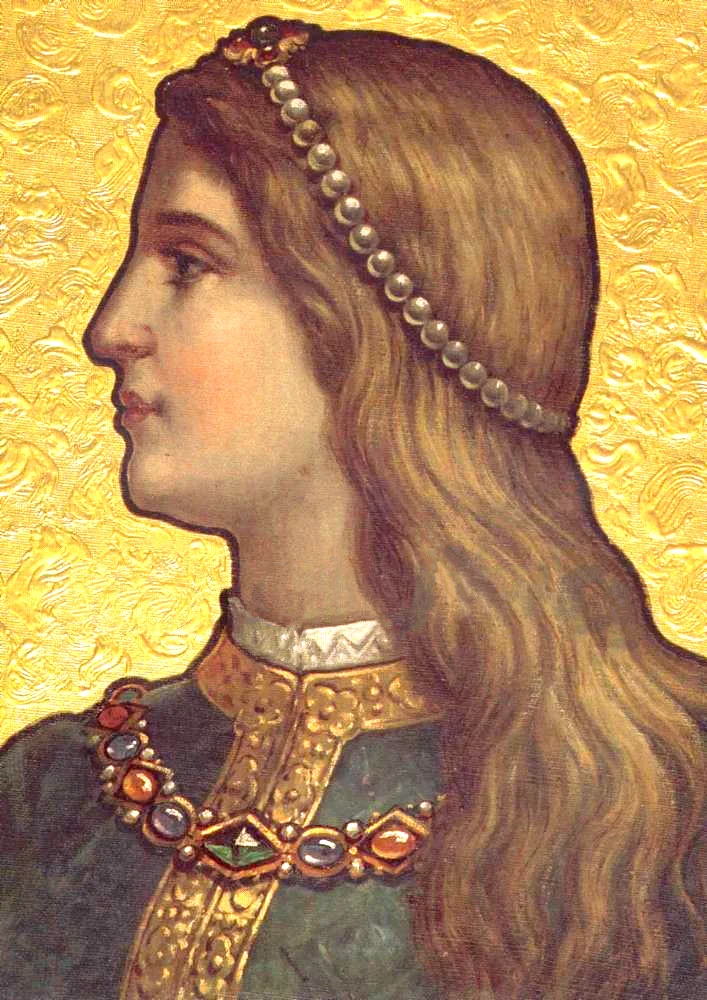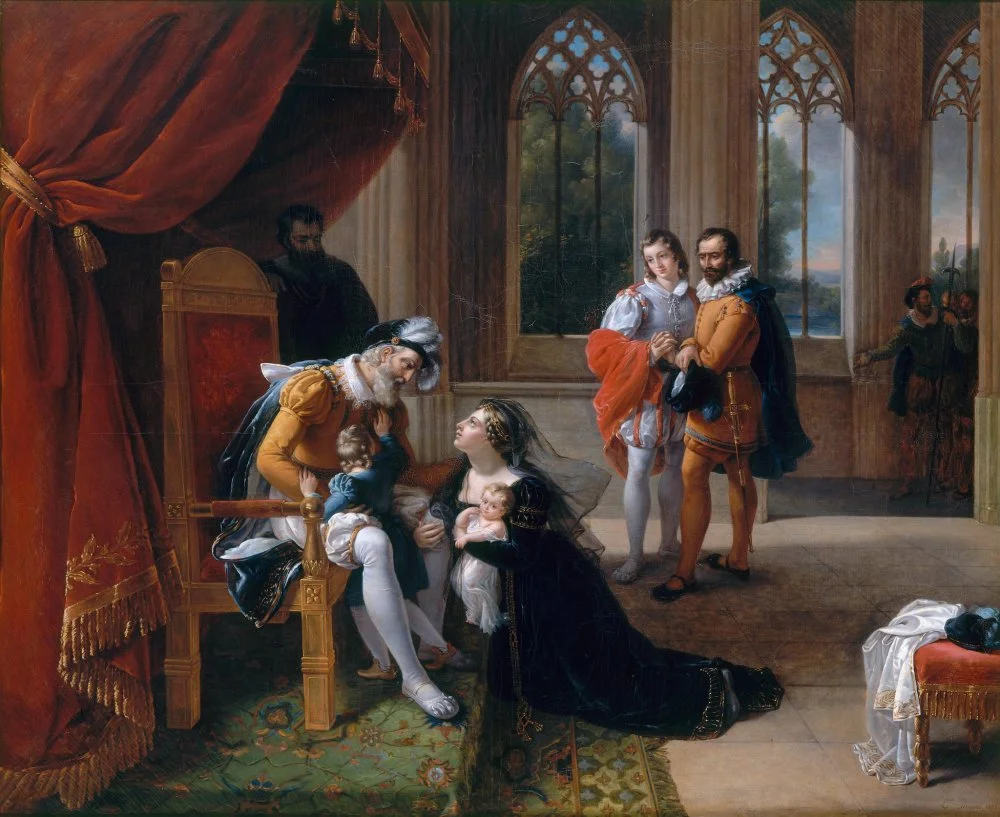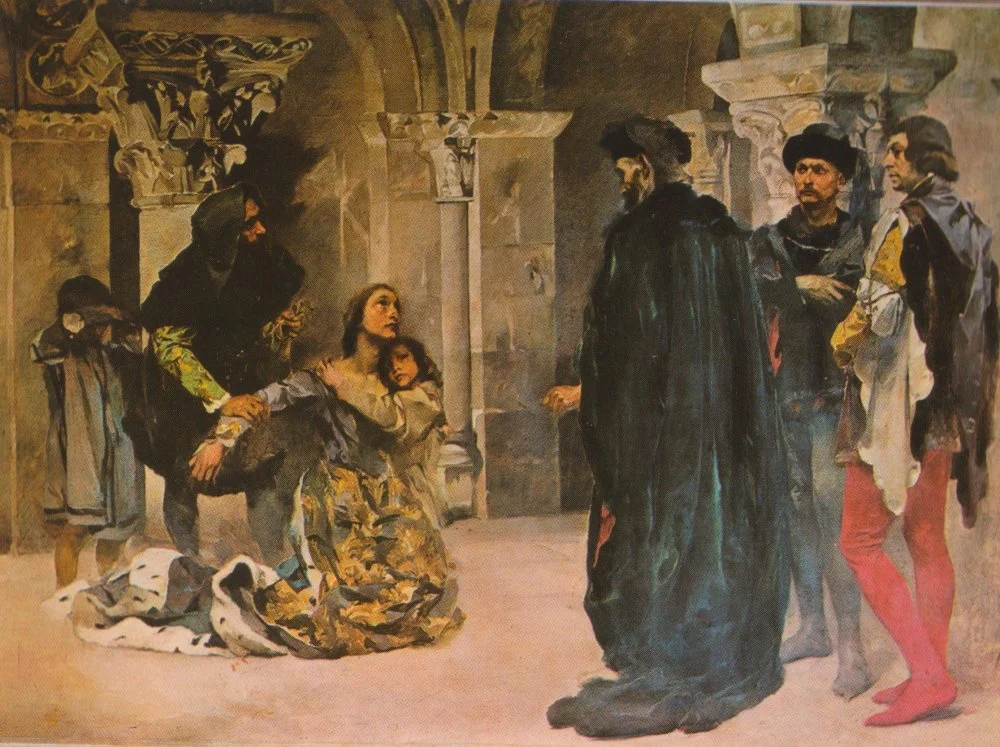The Mummy on the Throne
When and how did Portugal decide to crown a corpse

The Coronation of Inês de Castro in 1361, by Pierre-Charles Comte/Wikimedia commons
The painting is part of the collection at the Museum of Fine Arts in Lyon, France.
At first glance, you may think that the lady on the throne has a spinal injury, which is why she is unable to courteously respond to the greetings of a bearded nobleman. But that’s not the case at all! She has been dead for nearly six years, and the knight is kissing a cold, partly decomposed hand. How on earth, you ask then, did all these well-dressed people find themselves in this spine-chilling situation? Let’s find out.

Detail The Coronation of Inês de Castro in 1361, by Pierre-Charles Comte.
From a noble Spanish family, Ines De Castro was a lady-in-waiting to Princess Constanza Manuel, who would be the bride of Don Pedro, the heir to the throne of Portugal. In 1336, aged twelve, Ines arrived from Spain to Portugal along with the princess.
We can make an educated, confident guess that Ines indeed was very beautiful. First, Don Pedro, the husband of her mistress, fell passionately in love with her soon after she arrived. Second, there are numerous accounts describing her outstanding beauty. According to legend, she had such light and translucent skin that when she drank red wine one could see it flow down inside her throat. This is, of course, impossible from a medical point of view, but legends are legends, and they do not have to take reality into account.

19th-century depiction of Inês de Castro, on the ceiling of the Kings' Room, Quinta da Regaleira, Sintra, Portugal.
One should also not discount the fact that another monarch, Pedro I of Castile, fell in love with Ines’s sister Juana and left his wife, despite the objections of his family and the Holy See, to marry her. Thus it would be fair to say that the Castro girls were indeed extremely attractive.
Do we know if Ines responded to the prince’s advances? The sources vary on that answer. According to some sources, she became Pedro’s lover while his wife was still alive. According to others, she rejected him gracefully. We do, however, know that Ines and Princess Constanza were very close, and Ines even became godmother to her first son, Luiz, who died as an infant, and this makes the latter version more likely.
Almost immediately after Constanza’s death, who tragically died giving birth to the heir to the Portuguese throne, Infante Fernando, Pedro secretly married Ines. He insisted that the marriage took place, but no documents confirming this wedding were ever found. Their first son was born nine months after Constanza’s passing.
The couple led a relatively quiet life for some time, without advertising their relationship or demanding any official recognition for Ines. Ines gave birth to three sons and one daughter, living in a remote castle built especially for her and not interfering with any state business.

Inês de Castro with Her Children at the Feet of Afonso IV, King of Portugal, Seeking Clemency for Her Husband, Don Pedro. Painting by Eugénie Servières, 1822/Wikimedia commons
Nevertheless, her father-in-law and Don Pedro’s father, the king of Portugal, Afonso IV(1325-1357), strongly disliked Ines. Pedro already had a son with his late wife, Infante Fernando, who was the rightful heir to the throne, and the grandfather thought that Ines’s sons could potentially pose a threat. Because their mother, who was smart, polite, and popular among the aristocracy, held great influence over Don Pedro, Ines’s children could push Fernando away from the throne which, in turn, could result in uprisings, civil war, and other political problems.
Ines and her children were sent to the Monastery St. Clara, practically under arrest, and in 1355, having sent his son as far away as possible on state business, Afonso visited his daughter-in-law. Intuitively understanding that something was wrong she fell at his feet, pleading for the lives of her children and her own. The king left, but a few days later Ines was captured by his associates, swiftly charged, beheaded, and buried. However, Afonso spared the lives of the children.
Having learned of his wife’s fate, Don Pedro led an armed rebellion against his father, and the war continued for two years, after which Pedro was defeated. However, soon after, Afonso died of natural causes, Don Pedro became the king of Portugal.

Murder of Inês de Castro. Painting by Columbano Bordalo Pinheiro, ca. 1901/Wikimedia commons
Having ascended to the throne, the first order Pedro gave was for Ines’s murderers to be found and punished. The guilty men fled the country, but several were still found and brought to the king, who, according to legend, executed them himself by ripping out their hearts.
Several years later, in 1361, following the king’s orders, Ines’s body was exhumed, the severed head sewn back onto it. It was dressed in royal clothing and placed on the throne. This was followed by a ceremony. Pedro was the first to kiss Ines’s decaying fingers, announcing her the lawful queen, after which the entire court swore their allegiance as well.
Many authors inspired by this horrific story (among them were Camoens and Hugo) wrote about this scene as a testament of the love of a king who had lost his mind due to his grief. Historians are, however, more grounded creatures. Thus, they consider the story about the posthumous coronation possibly made up, especially as it was absent from the chronicles of the time and appeared only in much later documents. However, even if this coronation did happen, it was most likely a political decision. By the coronation of Ines (even though she was dead), Pedro was proving the fact of their marriage and therefore the legitimacy of his beloved sons with Ines.
It is especially important to remember that this coronation took place after Pedro became king, by which time he’d had another son with a new mistress. This baby, Juan, later became the successor to the Portuguese dynasty, having emerged victorious from many years of strife that plunged Portugal into civil war. After Pedro’s death, all his heirs began fighting for the crown just as Alfonso feared.

Karl Bryullov. The Death of Ines de Castro. 1834/Wikimedia commons
Ines’s story is represented quite well in history paintings. Many painters turned to her in their work (as, for example, Karl Bryullov did in his painting The Assassination of Ines De Castro). However, the painting by the French history painter Pierre-Charles Comte is one of very few that shows Ines not as a young lady-in-waiting, humbly turning her head away from the prince, not as a mother on her knees, begging for the lives of her children to be spared, but as a crowned mummy, striking terror into the hearts of both into the court nobility and the spectators. Painted in 1849 by a very young painter, the painting was not as sensational as a stain on his reputation as bourgeois society did not largely approve of it. With his next paintings, Pierre-Charles tried choosing more appropriate subjects for his historic paintings, such as Francis I ‘Ringing’ the Carps of Fontainebleau.

The Coronation of Inês de Castro in 1361, by Pierre-Charles Comte/Wikimedia commons



